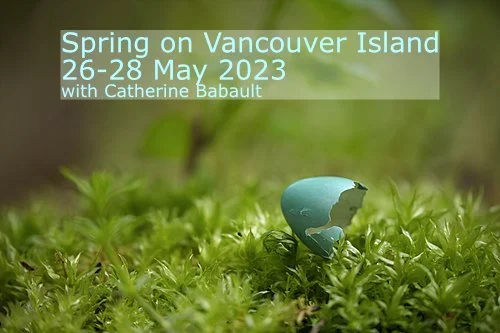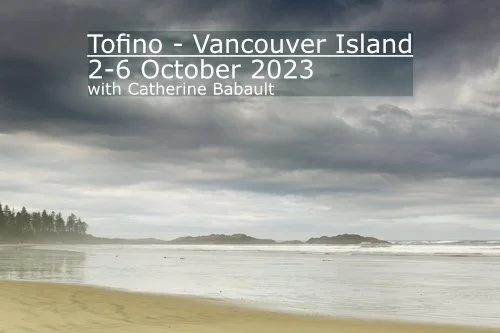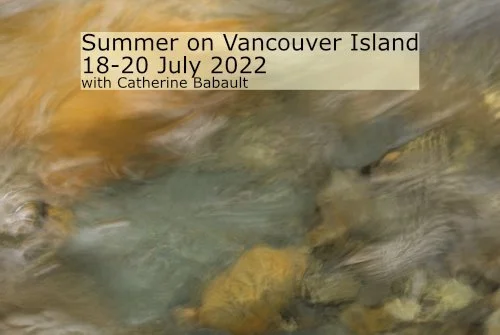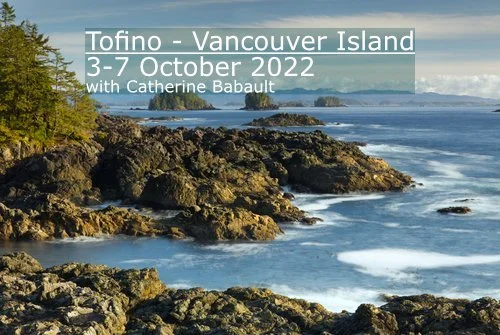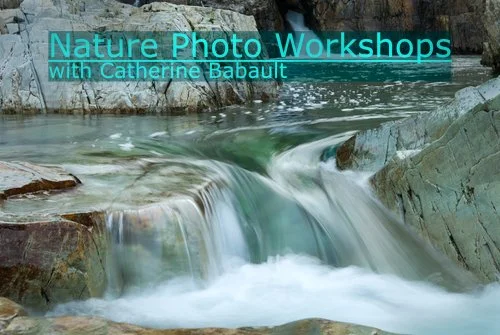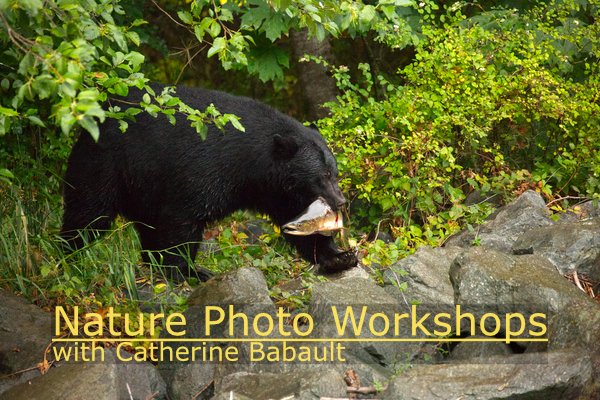Je photographie cette harde depuis les dernières années et j’anticipe toujours beaucoup nos rencontres potentielles. Rien n’est jamais donné avec la faune. Parfois ils ne se montrent pas ou bien je dois attendre tranquillement pendant des heures.
J’ai un lieu préféré pour photographier cette harde de wapiti à partir d’une distance respectueuse et d’un point de vue dégagé. Au cours d’une récente visite, alors que je marchais vers ce lieu, j’ai remarqué que la harde se rendait déjà dans cette direction. J’ai donc commencé à marcher plus vite, mais silencieusement, afin que les wapitis ne remarquent pas ma présence. Je suis arrivée la première, j’ai mis mon trépied en place, effectué les réglages sur mon appareil photo et j’ai attendu quelques minutes. Je pouvais les entendre se mouvoir dans la forêt et marcher sur des bouts de bois secs. Lorsqu’ils sont sortis de la forêt, les femelles ont traversé la rivière en premier tout en entourant les petits, probablement pour les protéger d’éventuels prédateurs. Le dernier à apparaître, pour fermer la marche, était le cerf avec ses bois majestueux. Je n’avais que cinq minutes pour les photographier avant qu’ils ne disparaissent à nouveau de ma vue et j’ai apprécié chaque minute.
À chaque fois que je vois cette harde, je me sens privilégiée d’être le témoin de moments importants dans leur vie, de voir les femelles enceintes ou allaiter leurs petits, d’observer les jeunes s’amuser à se pourchasser et de voir le cerf marcher fièrement autour de son harem d’une douzaine de femelles. Avec le début de la saison du rut, j’espère pouvoir être en mesure de photographier leur comportement notamment celui du cerf.


